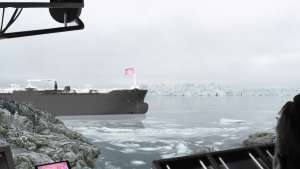This animated promotional short film of Onward Internet illustrates the often forgotten reach of the internet in totality. In our data-driven age, it is easy to forget about the actual design of the platform that connects billions of people in the blink of an eye each day. Setting aside the fascination with the Instagram selfie, Facebook likes, níche news articles and Youtube hits for a moment, allows us to consider the broader questions of this gargantuan communication tool, starting with the most basic…
WHAT IS THE INTERNET?
Looking past the virtual side of the worldwide web and the slick content funnelled through our computer and smartphone screens, the internet does require infrastructure in the real world to work. We consume the end product of the data-highway with relish without thinking about the physicality of it.
Tubes, the book by journalist Andrew Blum, offers a detailed look into the real-world side of the web. He outlines the surprisingly tactile ‘hubs’ of the internet – unmarked buildings dotted across the world in major cities that house the highest concentration of data traffic of all.
These buildings exist with no signs or advertisements fixed on the outside, instead silently hosting miles upon miles of bandwidth and server clusters owned by internet service providers. Over last few decades, old telegraph buildings and other defunct spaces all around the world have been meticulously rewired to hold modern fibre-optic networks and server assemblies which are the roads on which we exchange data.
WHERE IS THE INTERNET?
When the internet was born (roughly half a century ago), it was meant to be a defensive measure of US intelligence. It was known as ARPANET, a force project with the objective of connecting several super-computer locations in different parts of North America so that if one of them was destroyed by enemy forces, the others would continue to work.
Today, vast data cables lie at the bottom of the world’s oceans that connect every continent with one another. From the coast of Portugal, where a ten-thousand-mile undersea cable no wider than a human elbow connects Europe and Africa, to the wilds of the American Pacific Northwest, where the data giants Google, Microsoft, and Facebook have built monumental data centers that enable us to hook into the data currents with our personal devices.
HOW QUICKLY IS THE INTERNET GROWING?
In terms of data, it is estimated that the internet doubles in size every five years. There are a number of ways to gauge the size of the world wide web and how it is expanding. Understanding the lexicon alone, when considering swathes of digital content on this scale, can become jarring. Moving into the size of the internet as one entity, one must become familiar with exabytes (a billion billion bytes) and zettabytes (a sextillion bytes).
According to Cisco's Visual Networking Index initiative, by the end of 2016 global internet traffic reached 1.1 zettabytes per year and they project that by 2019, global traffic will hit 2 zettabytes per year. To put these figures in more real terms, a Washington Post reporter estimated in 2015 that it would require 305.5 billion pages of paper to print the whole internet in one go.
WHAT ARE THE UNCHARTED PARTS OF THE INTERNET?
One sometimes hears about the “deep web” or the “dark web” as the villainous online regions and wretched hives where only high-profile hackers and nefarious dealers roam. In reality, these terms refer to much more mundane fair than Hollywood writers would have the layman believe.
There is a distinction between these two concepts. Dark web describes the encrypted networks that exist between servers and their clients. Deep web refers to content inside databases that for one reason or another, cannot be indexed by normal search engines.
What dark and deep web share is that neither of them can be accessed by normal programmes such as Google or FireFox. To tap into these unregistered realms, Tor Hidden Service Protocol is needed. It is a kind of shortcut – an anonymity network that exists outside of the conventional constellation of internet servers. With Tor, your computer stays within an anonymous playground and you will not know what system you are accessing (unless the other party tells you) and they will not know who you are unless you tell them. It is a way of going off-grid while staying on the grid, improving security while relinquishing it in a way.
Fortunately, rumours about the dangers of the deep web are massively inflated. At most, when accessing the web through Tor, one faces relentless trolling and the outside chance of being pranked. Some sites in the anonymous network may contain links to illegal operations and being scammed in the deep web can happen – but this exists in the “regular” parts of the internet too.







